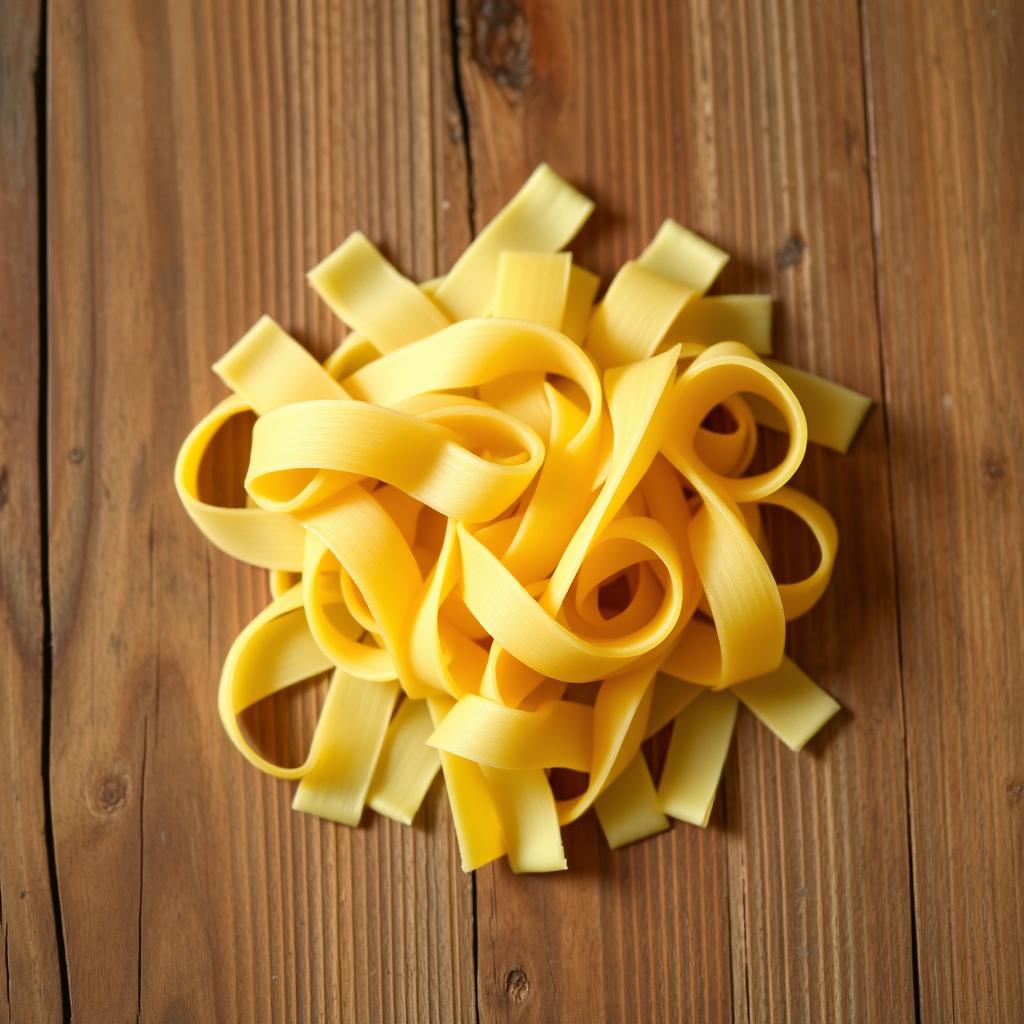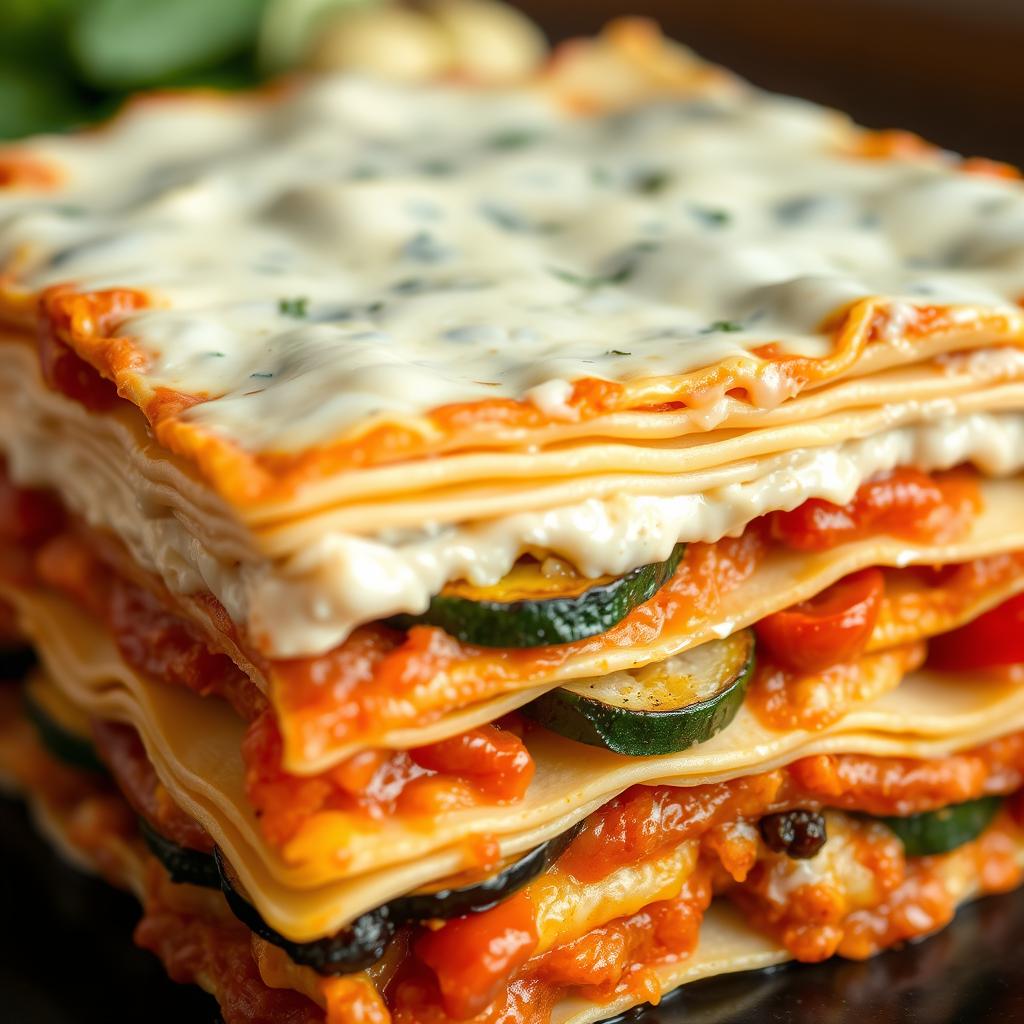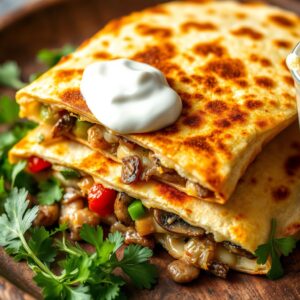Ever wondered if a plant-based take can match the comfort of classic Italian food? This guide shows you how to build a crowd-pleasing, oven-ready meal that fits your lifestyle and saves time.
You’ll learn when to choose oven-ready noodles like Ronzoni, how thicker jarred sauce such as Rao’s prevents watery layers, and quick dairy-free cheese options from tofu or soaked cashews.
Follow clear steps so your pasta layers hold, the sauce stays rich, and the cheese melts without fuss. The method works for weeknights, potlucks, or special dinners using common U.S. brands and pantry shortcuts.
Ready to get neat, saucy slices from your oven with minimal prep? Read on — this short recipe roadmap gives bake times, cover tips, and resting tricks so every slice looks and tastes great.
Key Takeaways
- Use oven-ready noodles to cut prep time and simplify assembly.
- Pick a thick jarred sauce to avoid watery layers; Rao’s is a reliable option.
- Make quick vegan ricotta with tofu or cashews for texture and flavor.
- Bake covered then uncover near the end; rest 15 minutes for clean slices.
- This guide targets U.S. cooks with brand-specific, pantry-friendly tips.
Vegan lasagna recipes you’ll love: what to expect from this plant-based comfort classic
You’ll get a dependable method that balances creamy ricotta, thick tomato sauce, and sturdy noodles so each slice stands tall.
Why this post fits U.S. home cooks: common brands like Rao’s and Ronzoni are easy to find at grocery chains. That makes pantry-friendly swaps fast and reliable when you don’t have extra time.
Practical baking notes: assemble after you prep noodles, filling, and sauce. Bake at about 400°F, cover then uncover near the end for browning, and rest 15 minutes before cutting.
- Expect creamy plant-based ricotta and robust marinara sauce depth so the interior stays luscious.
- Season well with salt and balance mozzarella cheese alternatives so the top browns without drying out.
- One pan feeds 8–10—perfect for potlucks; scale down for weeknight dinners and serve with a big salad.
Key takeaway: with simple prep and the right tomato sauce, this comfort food classic delivers flavor and structure in less time than you think.
Ingredients and smart swaps for the best vegan lasagna

Choose ingredients that give texture and richness without extra fuss in the oven.
Core staples: lasagna noodles, savory marinara sauce, vegan ricotta, spinach, mushrooms, garlic, onion, and olive oil form the foundation.
For noodles, stock up and decide: boil al dente or use oven-ready sheets. Season boiling water and handle sheets gently to avoid tears.
Cheese and ricotta options
Top layers benefit from vegan mozzarella cheese for stretch and a sprinkle of vegan parmesan for umami. Use vegan mozzarella sparingly so the ricotta layer still shines.
Ricotta two ways: tofu-based ricotta is quick, protein-rich, and wallet-friendly. Cashew ricotta gives a rich mouthfeel but needs soaked nuts and a high-powered blender.
“A spoonful of nutritional yeast or a cornstarch slurry can rescue a thin tomato sauce fast.”
Fixing thin sauce
- Stir in 2–3 tablespoons nutritional yeast and simmer 2–3 minutes.
- Or whisk 1 tablespoon cornstarch + 1 tablespoon water, add to simmering sauce and cook 2–3 minutes.
Quick prep tip: Sauté onion and garlic in olive oil, brown mushrooms until they release water, then wilt spinach briefly. Measure by cup or teaspoon and taste as you layer.
Prep like a pro: noodles, veggies, and ricotta
Get your mise en place ready so assembly takes minutes and each layer stays tidy. A little prep makes a big difference in texture and sliceability.
Cook noodles al dente or choose no-cook sheets
Bring a large pot of salted water to a boil and cook noodles just to al dente. Rinse quickly to stop cooking, then toss with a little oil so sheets stay separate while you work.
If you want speed, pick oven-ready lasagna noodles labeled “no-cook.” They hydrate in the oven when your sauce is thick enough.
Sauté vegetables for a savory layer
Warm a pan with olive oil, sauté onion until translucent, then stir in garlic for about 30–60 seconds. Add mushrooms and cook several minutes until they brown and release moisture.
Finish by tossing in spinach and a pinch of salt. Cook only minutes until wilted so the veggie layer doesn’t get watery.
Make or buy ricotta, then chill
For quick tofu ricotta, blend firm tofu with lemon, nutritional yeast, salt, and olive oil—about five minutes. Cashew ricotta needs soaking and a short blend, then chill to firm up.
Adjust seasoning, taste, and set aside in the fridge. Slightly chilled ricotta spreads cleanly and helps your lasagna hold neat slices when baked.
- Keep noodles on a flat baking sheet to prevent curling.
- Drain excess moisture from the pan before assembly.
- Line up sauce, pasta, ricotta, and veggies so assembly takes only minutes.
Layering your lasagna: the exact order for perfect slices

Start smart: spread about 1 cup of sauce across the bottom of the pan so noodles won’t stick and the edges stay moist.
Lay noodles snugly to form your first layer. Spread a thin, even coat of ricotta over the noodles.
Add a spinach-mushroom veggie layer next, then spoon on marinara. Lightly sprinkle vegan mozzarella to bind without weighing down the layer.
- Keep a thin coat of sauce under each noodle so the center cooks evenly.
- Stagger noodle seams from layer to layer and press gently to settle each layer.
- Repeat noodles → ricotta → veggies → marinara → vegan mozzarella until the dish is nearly full.
For the finish, go sauce top, scatter mozzarella on the top, and add optional tomato slices for color. Wipe rim drips before baking.
“Even, modest layers and a sauced base are the fastest way to neat, sliceable results.”
Bake at 400°F about 20–25 minutes (or follow your variation). Let the lasagna rest before cutting so slices stay clean and the layers set.
Bake time, temperature, and resting for clean cuts
A predictable bake schedule makes the difference between a sloppy casserole and clean, confident slices. Set the oven, position the pan, and follow the minutes below for reliable results.
Oven settings and when to cover
Preheat to 400°F and cover the pan loosely with foil so steam cooks the interior without drying the top. Position the pan on the center rack; avoid the bottom where the sauce can over-reduce.
How long to bake and why resting matters
Bake covered for 30–40 minutes, then remove foil and bake 15 more minutes to brown the sauce top and reduce surface moisture. If you prefer a gentler approach, bake at 350°F for about an hour covered, then finish with a short broil (3–5 minutes), watching closely.
Look for visual cues: bubbling at the edges, melted cheese across the top, and a knife that slips through the noodles with little resistance. If condensation forms under foil, tilt it so water drips back into the pan to keep layers moist.
Most importantly, rest the dish for at least 15 minutes. This pause lets layers set so you can cut neat squares. Before serving, run a thin knife around the edges and set aside plates nearby so you can serve while the interior stays warm.
Variations to try with your vegan lasagna
Small swaps—lentils for ground, zucchini for noodles—can shift this classic into many directions. Use these ideas to match taste, time, and pantry staples for a reliable lasagna recipe that fits your week.
Protein-packed options
Stir cooked lentils into warm marinara for a hearty, budget-friendly filling. Or brown vegan ground like Impossible or Beyond in olive oil, season with salt and a teaspoon of dried oregano, then fold into the sauce.
Veggie-forward builds
Layer sautéed zucchini, mushrooms, and spinach, but cook off excess moisture first so the layers stay firm. Trim noodles to fit and overlap slightly so slices hold together after baking.
Flavor boosters
Add a teaspoon of dried basil and a pinch of red pepper flakes for brightness. Fold nutritional yeast into vegan ricotta for cheesy depth, and reserve a little vegan mozzarella on top so the pan browns without pooling.
- For nut-free, choose tofu-based vegan ricotta.
- Make a double batch of sauce and freeze in cups for easy weeknight builds.
Serving, sides, and storage
A well-planned table and smart storage let your main course shine and make weeknights easier. Start with a big green salad tossed simply with oil, salt, and lemon to cut the richness. Warm artisan bread on the side so guests can mop up extra marinara and sauce.
What to serve alongside
Make the meal family-style: a crisp salad, a basket of warm bread, and optional vegan meatballs warmed in extra marinara sauce. A chilled glass of chardonnay pairs well if you drink wine.
Make-ahead, reheating, and freezing
Assemble the pan up to a day ahead, cover tightly, and add a few extra minutes when baking from fridge-cold. After baking, rest for at least 15 minutes before cutting so layers set.
- Cool leftovers within an hour, then set aside portions in airtight containers.
- Reheat uncovered until the top bubbles and the center is hot; if reheating single slices, add a spoonful of water around the edges and tent loosely.
- Freeze whole or by the cup in meal-size blocks; thaw overnight in the fridge, or bake from frozen with extra minutes.
Trusted marinara picks and pantry shopping
Choose a thick jarred marinara like Rao’s to avoid watery results. Stock Ronzoni oven-ready noodles and keep vegan mozzarella cheese, onion, oil, and salt on hand for quick weeknight builds.
Conclusion
Finish with a few reliable checks and your pan will reward you. Use a thick sauce like Rao’s so layers stay moist but not watery, use well-cooked or Ronzoni oven-ready noodles, and keep a modest top layer of melty cheese so the surface browns without drying.
Rest the bake for at least 15 minutes so slices set and cut cleanly. Adjust bake time between 350–400°F depending on your oven and whether the pan is chilled.
You now have a step-by-step plan to build a great vegan lasagna for weeknights or gatherings. Bookmark this lasagna recipe, share it with friends, and trust your palate—season as you go and enjoy the comfort on your table.




